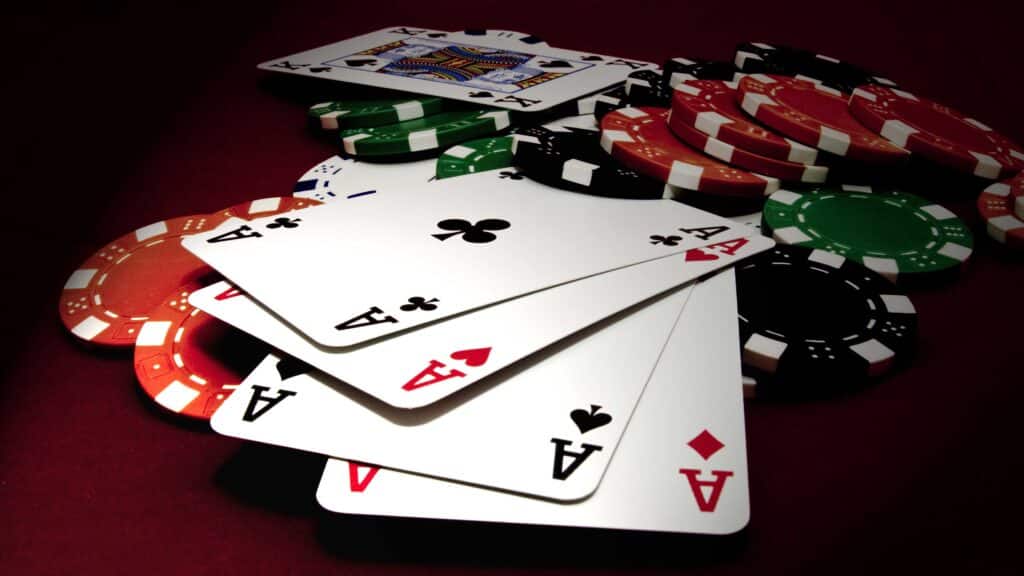Online poker has become one of the most popular and exciting ways to test your skills, whether you’re a beginner or an experienced player. With numerous platforms offering a wide variety of poker games, the decision to choose the right table can be overwhelming. If you are wondering how to choose the best online poker tables that suit your style and skill level, you've come to the right place. This comprehensive guide will provide you with all the insights you need, from understanding the different types of poker tables to advanced strategies for more seasoned players.
Understanding the Basics of Online Poker Tables
When it comes to online poker, the table you choose can significantly impact your experience. There are various types of poker tables, each catering to different player preferences and game styles. Understanding these differences will help you select the best one for your gameplay.
Types of Online Poker Tables
Online poker tables generally fall into a few categories, each designed for different levels of experience, budgets, and playstyles. Here are the most common types:
- Cash Tables: These are the most popular type of online poker table. Players bet real money on each hand, and the chips in play represent actual money. Cash tables are ideal for players who want flexibility and don’t want to commit to a long tournament.
- Tournament Tables: Tournament tables have a set buy-in fee and often offer larger prizes, but they also involve a level of elimination. Players with the highest chip count at the end win the prize pool. These tables require a different approach since you must manage your stack over multiple levels of play.
- Sit & Go (SNG) Tables: These are single-table tournaments that start once a set number of players have joined. They typically have quicker start times than full-scale tournaments and offer lower buy-ins. They’re great for players who want a faster-paced experience.
- Cash Game Tables vs. Tournament Tables: The major distinction between cash game and tournament tables is the structure of betting. Cash game tables have no level increases, and you can buy in and leave anytime, while tournament tables have escalating blinds and a fixed duration.
Table Stakes: How Much Should You Bet?
One of the essential aspects of choosing the right online poker table is understanding the concept of table stakes. This refers to the minimum and maximum bets allowed at a table, and it varies depending on the type of poker game you’re playing. Let’s break this down:
- Micro Stakes: These tables typically have low minimum bets (e.g., $0.01/$0.02 blinds) and are ideal for new players who want to practice without risking much money.
- Low Stakes: These tables generally have minimum bets ranging from $0.05/$0.10 to $1/$2 blinds. Low-stakes tables are suitable for players who have a basic understanding of poker and are looking to gain more experience.
- Medium Stakes: With higher buy-ins and larger blinds (e.g., $2/$4 to $5/$10), these tables are designed for players who want more action and are willing to risk more money.
- High Stakes: For experienced and professional players, high-stakes tables feature large blinds, often upwards of $25/$50 or more. These tables come with substantial risks but also offer significant rewards for skilled players.
How to Choose the Right Online Poker Table for Your Skill Level
Choosing a poker table that matches your experience level is crucial. If you’re new to the game, it’s important to pick a table that will allow you to grow your skills while minimizing potential losses. If you're an experienced player, selecting a table that offers enough challenge to hone your skills is key.
For Beginner Players
As a beginner, you should focus on low-stakes tables with smaller buy-ins. These tables are less competitive, providing you with a chance to learn the ropes without risking too much money. Look for tables with a high player-to-table ratio, where there are more recreational players than professionals. This will increase your chances of success as you can learn from your mistakes without losing your bankroll quickly.
For Intermediate Players
Once you’ve mastered the basics and gained some experience, you can start playing at medium-stakes tables. These tables typically feature a more diverse player pool, offering both new and skilled players. You should focus on playing tight-aggressive poker, looking for opportunities to trap your opponents and maximize your chip stack. Intermediate players should also begin focusing on table position and adjusting their strategies based on opponents’ tendencies.
For Advanced Players
Advanced players should target high-stakes tables where the competition is fierce, but the rewards are significant. These tables are where you’ll face off against skilled players, and every decision will count. At this level, poker strategy becomes much more nuanced, with players relying on complex tactics like bluffing, multi-street play, and hand reading. Advanced players often use tracking software, hand history analysis, and database tools to improve their game, so they need tables that provide enough action to justify these investments.
The Importance of Table Selection: Focus on the Right Players
While it’s essential to choose the right stakes, the player pool at the table is equally important. A good poker player knows when to seek a table full of weaker players and when to challenge stronger opponents to improve their skills. Here’s how to analyze table dynamics:
Look for Tables with More Recreational Players
If you’re a beginner or intermediate player, look for tables that have more recreational players than experienced pros. These players are more likely to make mistakes, giving you more opportunities to win pots and gain experience. Many online platforms allow you to view a table's player stats before you sit down, so take advantage of this feature to assess the competition. If most of the players have short stacks or low win rates, that’s a good sign the table is more relaxed and suited to your level.
Avoid Too Many Aggressive Players
On the flip side, avoid tables with too many aggressive players, especially if you’re still learning. Aggressive players will often raise and re-raise with a wide range of hands, which can lead to you losing big pots if you're not careful. As you gain experience, you can start looking for tables with a mix of passive and aggressive players, where you can choose your spots more strategically.
Consider Tournament Table Dynamics
When choosing a tournament table, focus on the event structure and player count. The ideal tournament table should have an appropriate level of competition based on your skill level. For example, sit-and-go tournaments are great for quick action, while multi-table tournaments (MTTs) provide a more challenging experience over several hours. The larger the tournament, the more unpredictable the play becomes, but it also provides more opportunities to capitalize on weak opponents.
How to Assess the Table’s Quality: Looking Beyond the Stakes
When selecting the best poker table, there are several factors that go beyond the size of the blinds or the type of game. Quality is an essential aspect, and here are a few tips for assessing the quality of the table:
Check for Software Features
Not all online poker platforms offer the same features. Some may have superior software that provides better graphics, user experience, and even in-depth player stats. A good platform will also have features like hand history, live chat, and the ability to track your progress over time. Make sure to select a platform that matches your needs in terms of features, as this will help you play more effectively and increase your chances of success.
Pay Attention to Table Speed
Every poker player has their preferred table speed. Some prefer faster-paced games with rapid action, while others enjoy taking their time to think through decisions. Online poker rooms often allow players to adjust the table speed according to their preferences. If you're an experienced player, a faster table might be more suited to your playstyle, while beginners may prefer slower games to give themselves more time to make decisions.
Ensure Proper Bankroll Management
Another critical aspect of choosing the best poker table is ensuring you have the right bankroll for the game. Bankroll management is crucial in online poker, especially for cash games. Make sure that your bankroll can handle multiple buy-ins for the table you’re selecting. For example, if you're playing cash games, it’s recommended to have at least 20 buy-ins for the stakes you plan to play. This ensures that you’re not risking more than you can afford, even during losing streaks.
Advanced Strategy: Using Tools to Track Your Performance
For advanced players, using tracking tools and poker solvers can give you an edge at the table. These tools analyze your gameplay and provide valuable insights into your decisions, helping you make more informed choices. Here’s how advanced players can use these tools:
Hand History Review
Many online poker platforms allow players to download their hand history, which is a detailed record of all their played hands. Advanced players use this data to analyze their decisions, identify leaks in their strategy, and pinpoint areas for improvement. Reviewing your hand history is one of the most effective ways to elevate your game.
Use of Poker Solvers
Poker solvers like GTO+ and PioSolver help you analyze poker spots and understand optimal strategies. These tools are especially helpful for understanding complex hands, optimal bet sizing, and how to exploit opponents. By integrating solver analysis into your gameplay, you can make mathematically correct decisions and increase your win rate.
Conclusion: Mastering Table Selection for Success
Choosing the best online poker table is an essential step in becoming a successful player. Whether you’re just starting or looking to refine your skills, understanding the types of tables, the player pool, and the dynamics of poker can give you the edge you need. By selecting the right table that matches your skill level, playing style, and bankroll, you’re setting yourself up for success. Keep learning, stay disciplined, and, most importantly, enjoy the game. With the right approach, the best poker tables can lead to the biggest wins!



